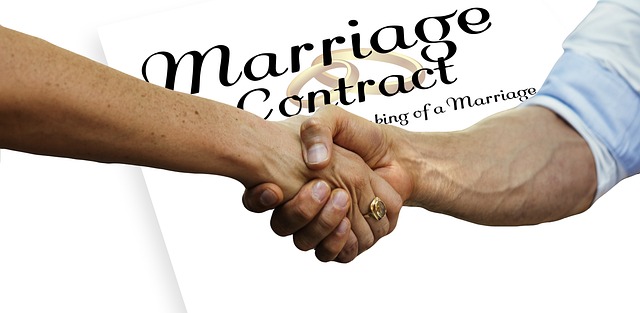High-conflict divorces are legally complex, with the courtroom playing a central role in resolving disputes. These cases involve intricate issues such as asset division and child custody that necessitate strategic legal maneuvering to protect the rights of all parties. The litigation process is often protracted, requiring meticulous legal management and a focus on achieving the most favorable outcomes under the unique circumstances of each case. Emotional and financial stakes are high, with comprehensive discovery processes, expert testimony, and sometimes psychological evaluations employed to ensure the best interests of any children involved are upheld. Legal teams are indispensable in guiding clients through these complex proceedings, maintaining composure amidst intense dynamics to navigate the intricacies of divorce law effectively. Alternative dispute resolution methods like mediation offer a constructive approach to high-conflict divorces, fostering clear communication and leading to more favorable outcomes with cost savings and privacy. Legal professionals advocate for out-of-court settlements to minimize conflict and set a positive tone for ongoing co-parenting relationships. Ultimately, the role of legal experts in divorce proceedings extends beyond litigation, encompassing advocacy for equitable resolutions that consider individual circumstances and uphold fairness and justice throughout the process.
High-conflict divorces present unique challenges that extend beyond the typical legal proceedings. This article delves into the intricacies of navigating such disputes, offering a comprehensive guide to understanding the legal landscape, managing emotions in courtroom settings, and exploring the efficacy of mediation and alternative dispute resolution methods. Legal professionals weigh in with expert insights on settling high-stakes matrimonial conflicts, providing valuable strategies for those facing the complexities of divorce resolution.
- Navigating the Complexities of High-Conflict Divorce: Understanding the Legal Landscape
- Strategies for Managing Emotions and Communication in Courtroom Settings
- The Role of Mediation and Alternative Dispute Resolution in High-Conflict Divorces
- Expert Insights: Approaches Taken by Legal Professionals to Settle High-Stakes Matrimonial Disputes
Navigating the Complexities of High-Conflict Divorce: Understanding the Legal Landscape

High-conflict divorces often necessitate a deep understanding of the legal landscape to navigate the complexities involved. The courtroom becomes the arbiter in such scenarios, where each party’s representation presents their case with vigor, and judges apply the law to resolve disputes. Legal experts must be adept at handling intricate issues ranging from asset division to child custody arrangements, which are often hotly contested. The litigation process in such cases is typically protracted, requiring a strategic approach to ensure the rights of all parties are protected, and outcomes are as favorable as possible given the circumstances.
In the realm of high-conflict divorce resolution, the courtroom serves not only as a forum for legal disputes but also as a space where emotional and financial stakes are at their highest. Parties involved must be prepared for the rigors of litigation, which often includes comprehensive discovery processes, expert testimony, and sometimes even psychological evaluations to ascertain the best interests of any children involved. The legal team’s expertise in navigating these complex proceedings is paramount, as they must remain steadfast amidst the tumultuous dynamics that characterize high-conflict divorces.
Strategies for Managing Emotions and Communication in Courtroom Settings

Navigating a high-conflict divorce in a courtroom setting requires strategic management of emotions and effective communication. Parties involved should prepare for the emotional challenges by seeking support through therapy or counseling to develop coping mechanisms that can be employed during court proceedings. Establishing clear and concise communication channels is also crucial; this may involve working with a mediator who can facilitate dialogue between spouses, ensuring that discussions remain focused on resolving issues rather than rehashing grievances. In the courtroom, it’s imperative to present a composed demeanor, as emotions can escalate quickly and affect judicial decisions. Strategies such as deep breathing exercises or visualization techniques can be practiced before testifying to maintain calmness. Additionally, legal representatives should advise their clients on how to articulate their points succinctly and avoid emotional outbursts that could undermine their case. By managing emotions effectively and engaging in clear communication, individuals can navigate the complexities of a courtroom divorce with greater composure and potentially achieve more favorable outcomes.
The Role of Mediation and Alternative Dispute Resolution in High-Conflict Divorces

In high-conflict divorces, the traditional courtroom process can often exacerbate existing tensions between spouses. Mediation emerges as a pivotal alternative, offering a structured environment where both parties can discuss and negotiate their differences with the assistance of a neutral third party. This mediator facilitates communication, helps to clarify issues, and guides the couple toward mutually acceptable solutions. The benefits of mediation include cost savings, privacy, and control over the outcome, as opposed to the unpredictable nature of litigation in a courtroom setting. Moreover, alternative dispute resolution methods like arbitration and collaborative law provide additional avenues for high-conflict divorce resolution, each tailored to meet the unique needs of the parties involved. These methods aim to resolve disputes efficiently, minimize emotional strain, and foster post-divorce co-parenting relationships by focusing on collaboration rather than adversarial combat.
Expert Insights: Approaches Taken by Legal Professionals to Settle High-Stakes Matrimonial Disputes

In the complex arena of high-conflict divorce resolution, legal professionals employ a variety of strategic approaches to navigate the intricate web of disputes. These experts often prioritize out-of-court settlements, recognizing that litigation within a courtroom can exacerbate already strained relationships and lead to less favorable outcomes for all parties involved. Mediation and collaborative law are favored alternatives, as they allow for a more controlled environment where both sides can communicate openly and work towards a mutually acceptable agreement. Attorneys skilled in these methods focus on de-escalating tensions and fostering constructive dialogue by emphasizing the importance of each spouse’s perspective and needs. This collaborative approach not only streamlines the resolution process but also lays a foundation for a healthier post-divorce co-parenting relationship, which is paramount in cases involving high-stakes matrimonial disputes.
The role of legal professionals in divorce proceedings extends beyond mere conflict resolution; it encompasses safeguarding the rights and interests of their clients. These experts are well-versed in the nuances of family law, adept at maneuvering through the complexities of property division, child custody arrangements, and spousal support determinations. By leveraging their expertise and legal acumen outside the courtroom, they can often achieve outcomes that are both equitable and tailored to the unique circumstances of each divorce case. This proactive stance ensures that clients are well-represented and that the process culminates in a resolution that is fair and just for all parties concerned.
High-conflict divorces present unique challenges that require nuanced and strategic legal navigation. This article has delved into the intricacies of this complex process, exploring the legal landscape, managing emotions in courtroom settings, and the efficacy of mediation as an alternative dispute resolution method. Legal professionals offer valuable insights into handling high-stakes matrimonial disputes, emphasizing that a measured approach can lead to more favorable outcomes. It is clear that individuals facing such divisive situations must arm themselves with knowledge and seek expert guidance to navigate the tumultuous waters of divorce with dignity and resolve. As the legal system continues to evolve, so too will the strategies available to those seeking resolution outside the combative nature of a courtroom.
